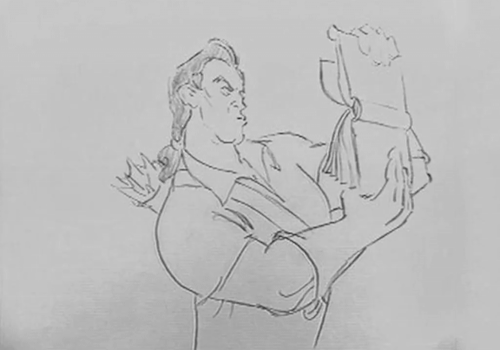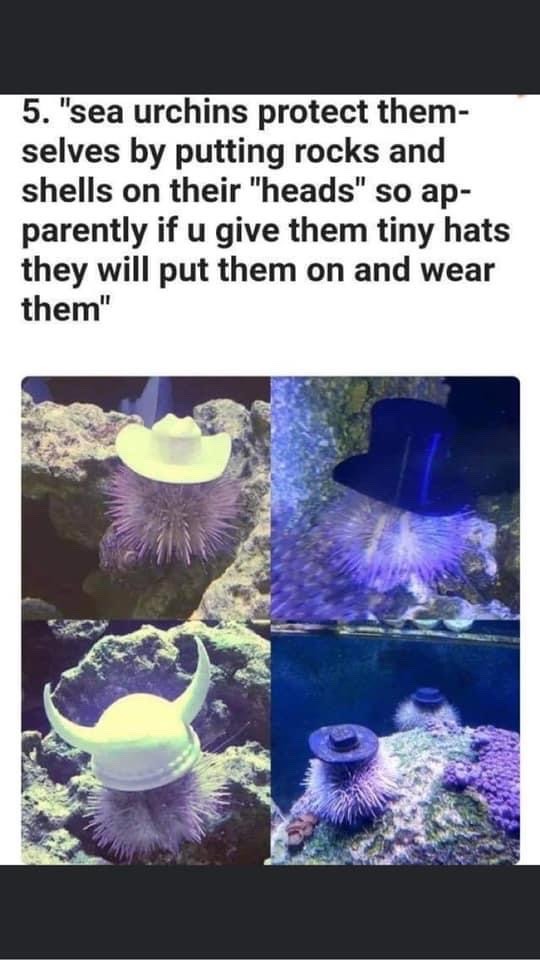Walking Between The Rolling Clay Hills At Petrified Forest National Park In Arizona, You Can Stumble

Walking between the rolling clay hills at Petrified Forest National Park in Arizona, you can stumble onto a scene that looks like a lumberjack went mad. But this wasn’t the work of an axe or saw. Over 200 million years ago, fallen trees washed into an ancient river system and were buried quickly enough that oxygen was cut off and decay slowed. Minerals, absorbed into the porous wood over thousands of years, crystallized and replaced the organic material forming what we call petrified wood. The crystals are hard and brittle, fracturing easily when subjected to stress. Over time, the still buried petrified trees broke like glass rods – giving the appearance today of logs cut with a chainsaw. Photo by Jacob Holgerson, National Park Service.
More Posts from Sawgrassnaturecenter and Others
Importance of Volunteering
If you are a high school student, volunteering is probably a requirement for graduation. Finding an organization to volunteer with can be challenging, especially during a global pandemic. There are a couple of resources that can help you find opportunities. Before we get to those, I want to encourage you to think about your interests and what you hope to get out of your volunteer experience. I also want to encourage you to look beyond fulfilling a graduation requirement. Volunteering provides you with experience that you can list on your resume and if you stay with an organization for a while, it can lead to references and letters of recommendation. I always remind my volunteers to treat their volunteer position like a job. Just because you are not getting paid does not mean you’re not acquiring work experience.
Where to look
Hands on Broward is a database of volunteer opportunities in Broward County and it allows users to search for opportunities based on their interests and location. Volunteer Connect is Volunteer Florida’s opportunity portal. It runs on the same software as Hands on Broward and is another resource I recommend to anyone interested in volunteering.
Different organizations use these platforms in different ways. At the Sawgrass Nature Center and Wildlife Hospital we use Hands on Broward to recruit episodic volunteers. This means that volunteers that sign up for these opportunities are not making a long-term commitment to us. You can volunteer once or multiple times, but you are limited to the dates and times posted.
If there is a specific organization, you are interested in start by visiting their website. Often, organizations will have volunteering information online. Be sure to read the requirements carefully and follow the instructions provided. If you have questions give them a call or send an e-mail if one is provided. Depending on the organization some volunteer opportunities will have age requirements. For example, our volunteer program has two different tracks based on age: Junior Volunteers are aged 13-17 and Adult Volunteers are 18 and older.
How to be a great volunteer
I am fortunate to work with amazing volunteers daily. They show up and do great work every single day. Our most successful volunteers understand our mission and how it relates to their assigned position. It is for this reason that I encourage volunteers to find something that aligns with their interests and goals. Please start your search early so that you are not scrambling to complete your hours with only months left to spare. Due to Covid-19 a lot of volunteer programs are operating at a limited capacity if they are operating at all.
Lastly, use volunteering as an opportunity to practice important skills such as speaking on the phone and writing professional e-mails. If you need to excuse yourself from a shift or need to ask a question it is a good idea to do it yourself rather than rely on an adult to do it for you. I love hearing from my volunteers and I especially like to see students taking an active role in the management of their volunteer role.
Learn more here: https://sawgrassnaturecenter.org/2020/11/17/finding-volunteer-opportunities-for-high-schoolers/

Molly, the Loggerhead Musk Turtle

A Long Tailed Skipper visited our Fire Bush
NASA, NOAA to Discuss Solar Cycle Prediction During Media Teleconference
NASA and the National Oceanic and Atmospheric Administration (NOAA) will discuss predictions for the upcoming solar cycle during a media teleconference at 1 p.m. EDT Tuesday, Sept. 15. Tracking the solar cycle is a key part of better understanding the Sun and mitigating its impacts on human technology and infrastructure. from NASA Breaking News http://www.nasa.gov/press-release/nasa-noaa-to-discuss-solar-cycle-prediction-during-media-teleconference

Can beer help save the bees? Check out this neat article we found: https://learn.kegerator.com/hops-help-bees/
PBS Eons: How We Identified One of Earth’s Earliest Animals:
Scientists had no idea what type of organisms the life forms of the Ediacaran were—lichen, colonies of bacteria, fungi or something else. It turns out, the key to solving the puzzle of Precambrian life was a tiny bit of fossilized fat.
How to Read an Academic/Research Paper
The main sections are:
Abstract: a general overview of the paper’s content. It’s good to start here first, to sort of “seed” the ideas and concepts of the paper into your head.
Introduction: the general overview and setting of the paper. Sometimes you’ll find brief descriptions of key concepts or phrases
Methods: Read at the end, the technical jargon might be too heavy to for your to read this first.
Results:
Conclusion/Interpretation/Discussion: the hypothesis is either accepted or rejected. Reading the conclusion can help you decide if you want to spend your time reading the paper or not if you are looking for a specific method of doing something.
References: Read to familiarize yourself with the common titles, sources, and theories.

Tip: Read the Intro, and conclusion before you read the rest of the paper, its the fastest way of knowing what’s in the paper.
Look out for the keywords key contribution and significant.
Step by Step instructions:
Read Intro and Conclusion
Identify the big question - what is this paper about?
Summarize the background in five sentences - why is this research important?
Identify specific questions - What exactly are the authors trying to answer with their research.
Read methods
Read results and write down a sentence to summarize the result of each experiment.
How do the results answer the specific question?
Read the conclusion section - Do the authors think that the results answered the big question?
Now read the abstract - did it match what happened?
Sources:
https://medium.com/ai-saturdays/how-to-read-academic-papers-without-freaking-out-3f7ef43a070f
https://www.huffingtonpost.com/jennifer-raff/how-to-read-and-understand-a-scientific-paper_b_5501628.html

This mural was donated by the SNC’s artist in resident. It shows a typical Florida habitat full of common wildlife that can be found in our backyards. If you’re interested in learning more about the process of making the mural or the SNC, click the link below.
https://sawgrassnaturecenter.org/2014/11/07/video-from-the-our-backyard-wilderness-mural-dedication-ceremony/



Rocky Mountain Golds: © gifs by riverwindphotography, September 2020
-
 lucia-luce reblogged this · 1 year ago
lucia-luce reblogged this · 1 year ago -
 lucia-luce liked this · 1 year ago
lucia-luce liked this · 1 year ago -
 colorhollywood reblogged this · 1 year ago
colorhollywood reblogged this · 1 year ago -
 wildernestt reblogged this · 1 year ago
wildernestt reblogged this · 1 year ago -
 somekidwithpersonality reblogged this · 2 years ago
somekidwithpersonality reblogged this · 2 years ago -
 somekidwithpersonality liked this · 2 years ago
somekidwithpersonality liked this · 2 years ago -
 pink-hedgehog-cactus reblogged this · 2 years ago
pink-hedgehog-cactus reblogged this · 2 years ago -
 thelostcanyon liked this · 2 years ago
thelostcanyon liked this · 2 years ago -
 golden-harmonies reblogged this · 2 years ago
golden-harmonies reblogged this · 2 years ago -
 containerold reblogged this · 3 years ago
containerold reblogged this · 3 years ago -
 macaronideluxe liked this · 3 years ago
macaronideluxe liked this · 3 years ago -
 pjgtdeeuiii9oo liked this · 3 years ago
pjgtdeeuiii9oo liked this · 3 years ago -
 red-winters reblogged this · 3 years ago
red-winters reblogged this · 3 years ago -
 fntnwwhn reblogged this · 3 years ago
fntnwwhn reblogged this · 3 years ago -
 red-winters reblogged this · 3 years ago
red-winters reblogged this · 3 years ago -
 red-winters liked this · 3 years ago
red-winters liked this · 3 years ago -
 servopedes liked this · 3 years ago
servopedes liked this · 3 years ago -
 likelikedlikes liked this · 3 years ago
likelikedlikes liked this · 3 years ago -
 nothing-but-void-and-blood liked this · 3 years ago
nothing-but-void-and-blood liked this · 3 years ago -
 jedi-giraffe liked this · 3 years ago
jedi-giraffe liked this · 3 years ago -
 zaratoustra53 liked this · 3 years ago
zaratoustra53 liked this · 3 years ago -
 arathesane liked this · 3 years ago
arathesane liked this · 3 years ago -
 thomasbolt reblogged this · 3 years ago
thomasbolt reblogged this · 3 years ago -
 thomasbolt liked this · 3 years ago
thomasbolt liked this · 3 years ago -
 clickbankstore liked this · 4 years ago
clickbankstore liked this · 4 years ago -
 johncoxfineartblog liked this · 4 years ago
johncoxfineartblog liked this · 4 years ago -
 strollsee reblogged this · 4 years ago
strollsee reblogged this · 4 years ago -
 eyepanicked reblogged this · 4 years ago
eyepanicked reblogged this · 4 years ago -
 likeabirdinflight liked this · 4 years ago
likeabirdinflight liked this · 4 years ago -
 sevenscreamingraccoons liked this · 4 years ago
sevenscreamingraccoons liked this · 4 years ago -
 cavalierprimary liked this · 4 years ago
cavalierprimary liked this · 4 years ago -
 pestopascal reblogged this · 4 years ago
pestopascal reblogged this · 4 years ago -
 orangecustard reblogged this · 4 years ago
orangecustard reblogged this · 4 years ago -
 grogpole liked this · 4 years ago
grogpole liked this · 4 years ago -
 twogunnorseman reblogged this · 4 years ago
twogunnorseman reblogged this · 4 years ago -
 sandyfrog121 reblogged this · 4 years ago
sandyfrog121 reblogged this · 4 years ago -
 gayghost69 liked this · 4 years ago
gayghost69 liked this · 4 years ago -
 fishdrake reblogged this · 4 years ago
fishdrake reblogged this · 4 years ago -
 fishdrake liked this · 4 years ago
fishdrake liked this · 4 years ago -
 feelingstalkquarantinezone reblogged this · 4 years ago
feelingstalkquarantinezone reblogged this · 4 years ago -
 earthwormdairy liked this · 4 years ago
earthwormdairy liked this · 4 years ago -
 childofeberron reblogged this · 4 years ago
childofeberron reblogged this · 4 years ago -
 datura-tea reblogged this · 4 years ago
datura-tea reblogged this · 4 years ago -
 nuggethunter--2 liked this · 4 years ago
nuggethunter--2 liked this · 4 years ago -
 muses-mojo liked this · 4 years ago
muses-mojo liked this · 4 years ago

The Sawgrass Nature Center (SNC) is a nonprofit located in South Florida. Our mission is to educate the public about native wildlife and environmental stewardship. We also rescue, rehabilitate, and release injured, orphaned, or sick wildlife. Animals that cannot be released due to permanent injuries or disabilities are given a forever home on site with animal keepers that know how to properly care for them. We are able to operate due to donations from generous patrons. If you are interested in helping us further our mission, check us out at: https://sawgrassnaturecenter.org/
202 posts
